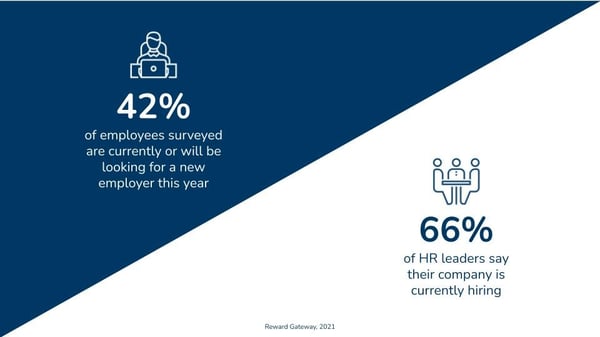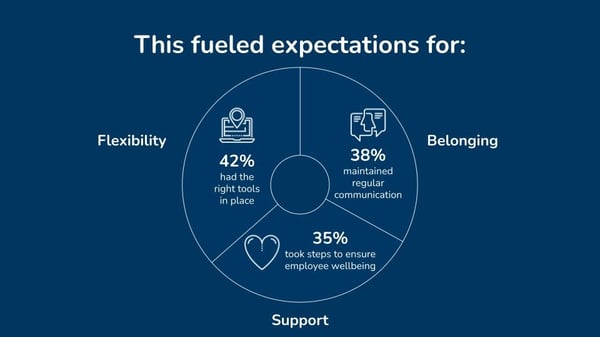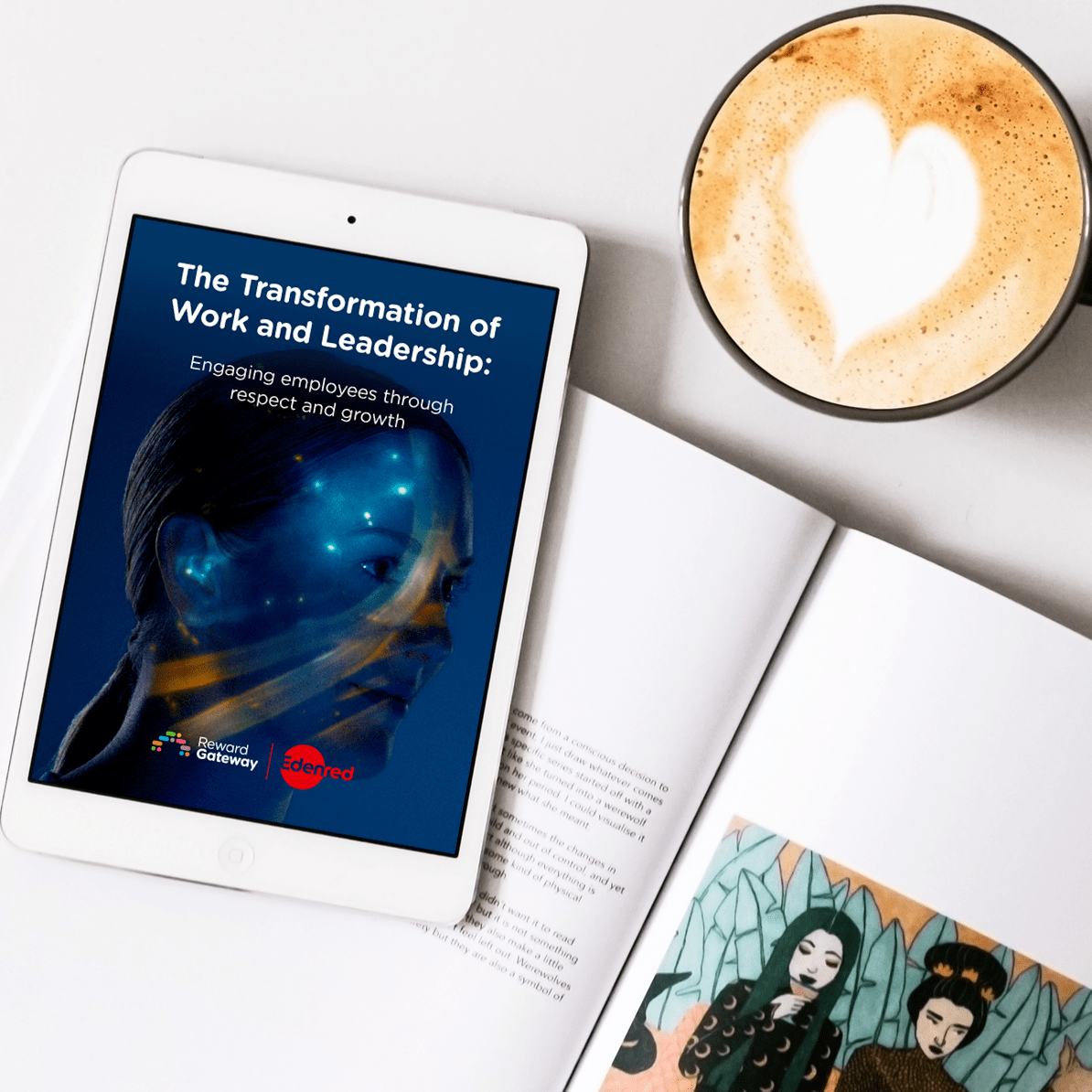How to reduce employee churn in 2021
It’s the stuff of nightmares, a looming question that we know HR leaders wish they could avoid …
What would you do if nearly half of your workforce disappeared?
A nightmare, yes, but unfortunately, this is becoming more and more of a reality for industries and businesses of all sizes. Our most recent retention research found at least 42% of employees are actively looking for a new employer or intend to in the next 12 months. 66% of HR leaders report their companies are actively hiring - so they’re looking for talent to poach.

The threat of losing almost half of your people is real and has material, bottom-line impact:
The Cost of Losing Top Talent
| Average U.S. salary | $54,132 |
| Average cost to replace employees = 33% of salary | $36,428 |
| Cost to 750-person business with 42% attrition rate | $11,474,820 |
| 20% attrition rate | $5,464,200 |
| 10% attrition rate | $2,732,100 |
Note: Based on conservative averages from the Department of Labor Statistics from 2020. Does not account for loss of productivity, knowledge, IP and morale.
Take a 750-person business as an example, and give employees the average American salary of about $54k. The average cost to replace an employee is about 33%, which means with an aggressive attrition rate of 42% is costing this business over $11mill.
With a 10% attrition rate, that’s a $2.7 million cost that eats into their profitability.
And this is based on conservative averages from the Department of Labor Statistics from this year. What it doesn’t account for is all of those somewhat more intangible factors, such as loss of productivity knowledge, IP and morale.
So employers are asking themselves, if we’re to avoid this material loss to productivity, is turning back to the pre-COVID-norm really an option?
The short answer is no: COVID-19 was a turning point, whether you are prepared to call it that or not.
Why we need to redefine the employee/employer relationship
 Research from across the board - Reward Gateway, Gartner, Seek, the Future Forum, Thrive Global, PwC – are aligned in our findings: employees have witnessed a different level of support and flexibility from companies the world over – some experienced it from their own employers, or they’ve heard about what their friends’ and family’s company offered.
Research from across the board - Reward Gateway, Gartner, Seek, the Future Forum, Thrive Global, PwC – are aligned in our findings: employees have witnessed a different level of support and flexibility from companies the world over – some experienced it from their own employers, or they’ve heard about what their friends’ and family’s company offered.
Our 2020 global survey found that employees who said their company had handled COVID-19 well indicated it was because their employer:
- had the right workplace tools and technologies in place (42%)
- maintained regular communication (38%)
- took steps to ensure employee wellbeing (35%)
To stay competitive, business leaders have to look at their overall Employee Value Proposition through the lens of COVID-19 and how this has changed employee needs and expectations. What does this mean?
Our research found three key findings in how to improve the employee experience and reduce the cost of attrition: Employees want more flexibility, a sense of belonging and better support.

Workplace flexibility is a must-have
Studies report that many Americans want flexible working to stay, but how many employers are prepared both culturally and technologically to make flexible or hybrid work successful?

Although many employees across the U.S. have already returned to the office, they still want the option to work from home. According to PwC, 55% of employees surveyed would prefer to be remote at least three days a week once pandemic concerns lessen. The need for flexible work will be ongoing, as employees continue juggling home life and work life.
So how is this for you? Is your organization debating whether it’s worth implementing flexible work and supporting hybrid work modes? Have you considered the impact high anxiety and uncertainty will have on your people’s productivity and willingness to stay? Have you crafted a return to work plan yet?
Foster a sense of belonging
For years we’ve been advocating for purpose-driven organizations that allow employees to do meaningful work.
 At a time when employee distrust of government and media are at an all-time high, purpose-led businesses can stand out by offering employees a sense of direction and consistency when so many factors outside work life can’t.
At a time when employee distrust of government and media are at an all-time high, purpose-led businesses can stand out by offering employees a sense of direction and consistency when so many factors outside work life can’t.
Add to this a global movement calling for leaders to proactively work towards diversity, equity and inclusion, and what we have is a keen appetite for employers to provide in an environment committed to cultivating both physical and psychological safety.
As employers, that means we need to create frameworks, rhythms and easy-to-access channels for employees to experience visibility and validation in the form of more frequent and multi-directional feedback, formalized recognition and reward, and open and two-way communication.
Offer holistic support
Finally, during the pandemic, practical, holistic support for employee health and wellness became a top priority, with more and more leaders challenged to have vulnerable, open and candid conversations about mental health and burnout at work.
 To stay ahead, employers need to think creatively about how to use what limited budget they have to stretch the financial, physical and emotional support they offer their people.
To stay ahead, employers need to think creatively about how to use what limited budget they have to stretch the financial, physical and emotional support they offer their people.
As we head into the next phase of the future of work, employees are asking for more. Employers need to be the ones to make the decision on when and how they can give that to them, or risk losing their top talent that helped them thrive throughout the pandemic.
If you’re looking for new ways to avoid the cost of attrition and keep your star players well into the future, the team at Reward Gateway can help you find a cost-effective solution to support your people. Get in touch to find out how.

%20(1).jpeg) Alexandra Powell
Alexandra Powell





